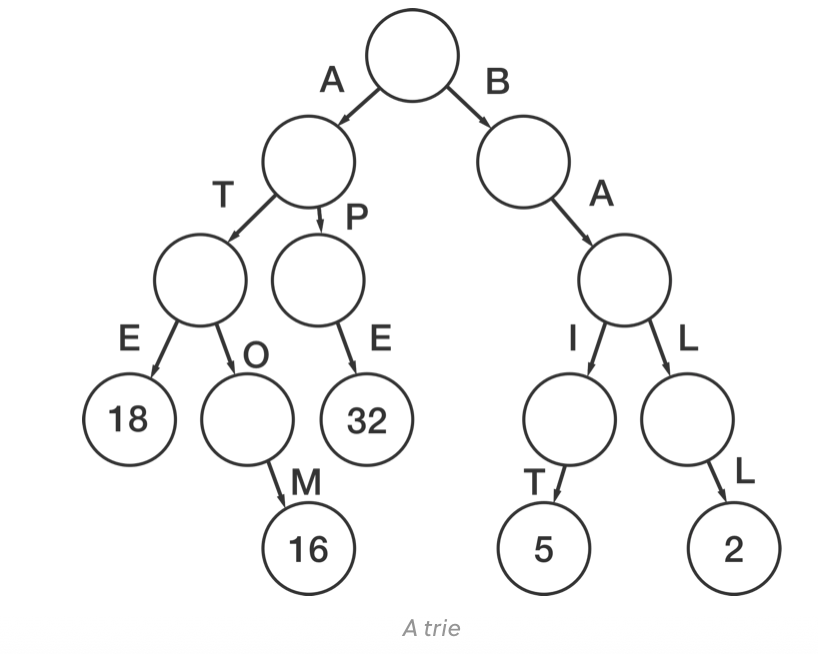...
When the index file exists, QueryNode loads the index file from the object store, call the deserialize method of Stringfield, and generates a Stringfield object.
Tries (also known as radix trees or prefix trees) are data structures that are typically used to store where the keys are usually .
For one, nodes in the tree do not store keys. Instead, they each store parts of keys. Traversing down from the root node to a leaf allows you to build the key as you progress. Also, there doesn't need to be a value at every node. In fact, values are typically only associated with leaf nodes.
For example, below is a graphic that is a representation of a trie that contains the following associative array.
map = { 'ape': 32, 'ball': 2, 'atom': 16, 'ate': 18, 'bait': 5 }
Tries have many advantages over their counterpart, the . They are used in many string search applications such as auto-complete, text search, and prefix matching. , a kind of trie, are often used in IP routing.
There are many variant implementations of Trie. The main consideration when we choose an implementation is whether it can support reverse lookup and save memory. The reverse loop means that we can get the original string from Tries through a certain ID.
In the following tests, the memory usage was measured for 3 million unique Unicode Russian words; "simple lookup" was a lookup for a specific word.
| Description | memory usage (MegaBytes) | Unicode | Lookup time (nanosecond) | Reverse-lookup | |
|---|---|---|---|---|---|
| PAT-Trie | a pointer-based implementation of PAT-trie (aka Patricia-Trie and Radix-Trie) and may use a lot of memory because of that. | 242 | No | 333 | No |
| HAT-Trie | Trie-HashMap hybrid. It is claimed to be the state-of-art Trie-like structure with the fastest lookups. | 125 | Yes | 195 | No |
| DA-Trie | Double-Array Trie C implementation | 101 | Yes | 281 | No |
| Marisa-Trie | memory-efficient recursive LOUDS-trie-based data structure implemented as C++ library | 11 | Yes | 2010 | Yes |
| DAWG | Directed Acyclic Word Graphs | 2.8 | Yes | 249 | No |
| Python-Dict | / | 600 | |||
| Python-list | / | 300 |
The following gives another C++ definition of HistoricalStringField.
| Code Block | ||
|---|---|---|
| ||
class HistoricalStringField2 {
MarisaTrie trie_;
std::vector<StrID> segOffsetToStrID;
std::vector<string>
extract(const std::vector<int32>& segmentOffsets);
std::vector<Blob>
serialize();
void
deserialize(const std::vector<Blob>&)
}
class Blob {
std::vector<char> blob_;
}
using StrID = int32;
|
